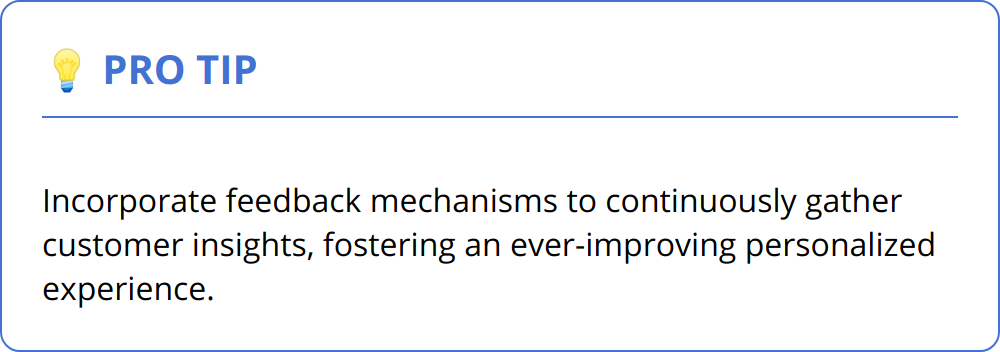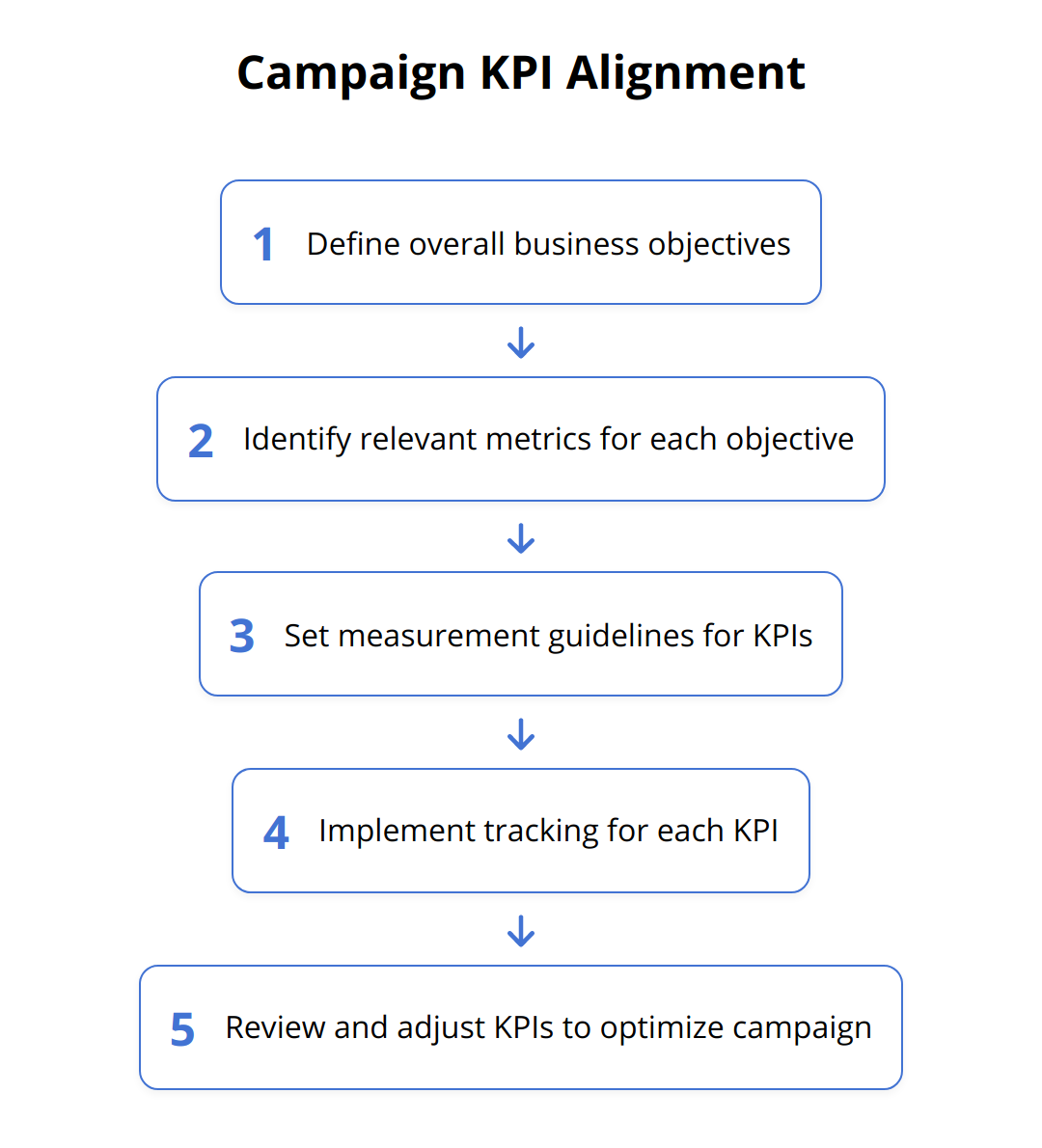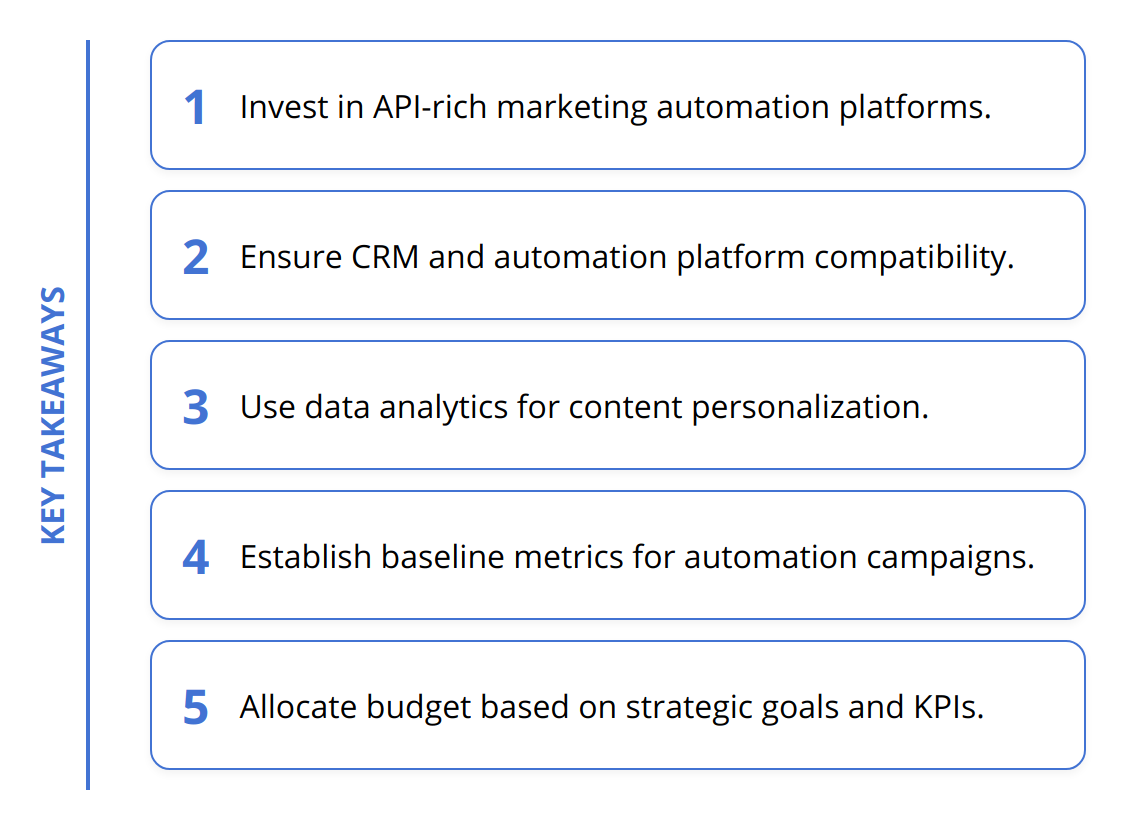Marketing automation has transformed the way businesses engage with their audiences, promising increased efficiency and a greater return on investment. Yet, the path to seamless automation is paved with its own set of complexities.
We at Emplibot understand these challenges firsthand, whether it’s integrating multiple systems or personalizing campaigns without losing the human touch. Our latest post unpacks these obstacles and offers viable solutions, aiming to help marketers navigate this ever-evolving landscape.
Tackling Integration Hurdles in Marketing Automation
When diving into marketing automation, integration complexities and compatibility issues can feel like navigating a maze without a map. To sail through these choppy waters, businesses must dismantle software silos, ensure CRM systems work harmoniously with automation platforms, and adapt to an existing IT infrastructure without causing disruptions.
Dismantling Software Silos
Software silos stem from a fragmented tech ecosystem where data and processes are isolated within particular applications. Break these barriers down by opting for a marketing automation platform that offers robust API capabilities. Through APIs, data can flow freely between your marketing automation software and other business systems, ensuring all your tools work in concert.
For instance, a well-integrated system can automatically funnel new leads from your website directly to the sales team, negating the need for manual entry. Automations like these are critical for maintaining data integrity and accelerating response times. Opt for platforms boasting a rich selection of pre-built integrations to simplify the process; platforms like HubSpot excel in this regard and become central to eliminating silos.

Seamless CRM Convergence
Your Customer Relationship Management (CRM) system is the beating heart of your sales operation, while your marketing automation is the lifeblood of lead generation. Ensuring they work together is non-negotiable. Start by choosing automation software with a track record of successful CRM integration. The right fit should enhance the CRM’s capabilities, allowing for a 360-degree view of each customer.
This seamless integration ensures sales staff have immediate access to a lead’s journey, including every touchpoint, from email interactions to download history. It fosters informed sales conversations and tailors the messaging to the individual’s needs, directly impacting conversion rates.
Adapting to Existing IT Infrastructure
Every business has a unique technology stack with its own quirks. Implementing marketing automation shouldn’t mean overhauling your existing setup. Work with solutions flexible enough to integrate smoothly with the legacy systems in place. This might mean choosing software providing extensive customization options or one that supports various data formats and communication protocols.
A gradual rollout is often more effective than a wholesale change, allowing for minor adjustments and user adaptation. It’s about building a bridge between new automation practices and established workflows, ensuring a stable transition.
In Practice
-
Select a marketing automation platform that prioritizes API availability and offers comprehensive integration guides.
-
Choose a system with a strong alignment with leading CRM solutions.
-
Consider phased implementation to measure performance and make necessary adjustments.
-
Provide comprehensive training for your team to aid adoption and integration.
By effectively integrating marketing automation into your business’s ecosystem, you gain visible results. Lead management becomes streamlined, customer engagement deepens, and ultimately, your marketing ROI climbs. It’s a strategic move that positions your enterprise to capitalize on automation’s full potential.
Balancing Personalization and Automation
Effective marketing automation does more than send out emails and post social media updates on schedule—it crafts individualized experiences that resonate with the recipient. The challenge is ensuring those automated communications feel as personalized and attentive as if they were hand-crafted. Here’s how you can harmonize the efficiency of automation with the personal touch your audience craves.
Harnessing Data for Custom Experiences
The data you collect is a gold mine for personalization. Use behavior tracking to understand how users interact with your website and emails. This insight enables you to segment your audience and send them content they care about. For example, if you see that a segment frequently visits a particular product category, you can automate related suggestions.
Practical Tip: Implement tracking pixels and make good use of analytics to gather data on user preferences and behaviors.
Actionable Insight: Use segmentation strategies in marketing automation to tailor your communications according to the collected data.
Personalized Content without Loss of Authenticity
Crafting personalized content doesn’t mean losing authenticity. The language you use should sound human and considerate. Even when sending out automated emails, use dynamic content that adapts based on user data, so each message appears tailor-made.
Recommended Approach: Develop dynamic content templates that allow for personalization tokens, which can insert user-specific information such as their name, past purchases, or location.

Statistical Backup: Personalized emails deliver six times higher transaction rates, but 70% of brands fail to use them effectively.
Strategies to Avoid Impersonal Messaging
Generic messages are the arch-nemesis of effective marketing automation. Avoid them by creating detailed buyer personas and crafting messages that align with each persona’s interests and pain points. Personalization should extend beyond just using the customer’s name—it should reflect a deep understanding of their individual journey and preferences.
Trend Observation: Market studies show that more than 50% of customers are likely to switch brands if a company doesn’t anticipate their needs.

Safeguard Against Generic Messaging: Regularly update your buyer personas and align them with new data to ensure continued relevance and deeper personalization.
Here’s a quick checklist to maintain that critical balance:
-
Use data analytics to drive content relevancy.
-
Regularly update and refine buyer personas.
-
Integrate dynamic content in your automated messages.
-
Educate your team on the tools that support personalization at scale.
By focusing on the details that matter and continuously refining your approaches through data-driven insights, your marketing automation can become an engine of personalized, meaningful interactions. Personalization at this level requires a deep commitment to understanding your customers but leads to lasting impacts on engagement and loyalty. Remember, personalization is not just a tactic, it’s a strategic approach to delivering value that speaks directly to your audience.
How to Evaluate Marketing Automation?
Evaluating marketing automation is about extracting the most significant insights from data. Businesses should focus on aligning marketing goals with data analysis to drive campaign performance and understand customer behavior. Here are strategies to fine-tune your performance analysis for marketing automation.
Leverage Data for Decision Making
High-performing marketing campaigns are not a result of guesswork; they’re data-driven. This means consistently monitoring the right metrics to understand what works. Conversion rates, email open rates, and click-through rates are part of the essentials, but deeper analytics can reveal much more. Consider using behavior tracking and engagement metrics to determine the effectiveness of your marketing funnels.
Tip: Establish a set of baseline metrics when campaigns go live. This way, you’ll have a reference point to measure growth or identify areas that need improvement.

Set Clear KPIs
Setting the proper Key Performance Indicators (KPIs) is a roadmap to success. Whether you’re looking to increase leads, enhance customer engagement, or boost sales, your KPIs should reflect these objectives. Determine which aspects of your campaign align with business goals and measure those relentlessly.
Trend: Increasingly, businesses are shifting focus to customer lifetime value (CLV) as a KPI, as it gives a more comprehensive view of customer engagement over time.

Decipher Customer Behavior
Marketing automation offers the opportunity to dive deep into customer behavior. Every click, download, and social media interaction can tell a story. Analyzing this data can provide actionable insights to tailor future campaigns more effectively.
Statistical Insight: Research shows that employing advanced analytics can help companies outperform competitors by 85% in sales growth and more than 25% in gross margin.
Actionable Advice: Use data-driven marketing tools that help you interpret customer behavior and improve targeting for your campaigns.
Track and Adapt Campaigns in Real Time
Real-time data isn’t just a buzzword; it’s the marketer’s compass in the rapidly changing digital landscape. The ability to track and tweak your marketing automation campaigns in real time can be a game-changer. It allows businesses to respond quickly to market changes, user feedback, and emerging trends to stay ahead of the competition.
Tip: Implement A/B testing for email campaigns to gauge effectiveness in real time, and adjust for optimal performance.
In summary, evaluating marketing automation demands a dedicated approach to metrics and analytics. It involves setting clear KPIs, leveraging data for insights, and understanding customer behavior. By using these strategies, companies can ensure their marketing efforts are not only efficient but also highly effective in meeting their goals. With continual optimization and a firm grasp on analytics, your marketing automation becomes a precise tool that delivers measurable business outcomes.
Maximizing Your Marketing Automation Budget
Facing the reality that resources are limited, businesses must use skill and insight to ensure their investment in marketing automation delivers the highest possible returns. This optimization requires strategic budget allocation, a well-trained team, and wise decisions about whether to hire in-house or opt for outsourcing.
Strategic Budget Allocation: The Key to Efficiency
Allocating your marketing budget with precision is the linchpin of automation success. It’s easy to overspend on sophisticated tools with features you’ll never use. Instead, direct your funds towards solutions that match your company’s needs and size. A platform that scales with your business growth is more investment-worthy than one with excess capabilities that sit idle.
It’s also wise to invest in the platform’s core features that align directly with your customer journey’s touchpoints. Efficiencies gained from automation should be reinvested into your marketing budget to create a virtuous cycle of improvement and further optimization. Be dogged in demanding clear, demonstrable ROI from any automation tool you consider.
Automation Training: Equip Your Team for Success
Your marketing automation tools are only as effective as the people running them. It is imperative to provide your team with the knowledge and skills to leverage these tools to their full potential. Training should cover the specific functions of your chosen platform as well as best practices for digital marketing.
Structured training programs are an investment in the long-run efficiency of your operations. They not only improve proficiency but also encourage team confidence and innovation in using these systems. Harnessing internal knowledge sharing sessions further bridges any skill gaps and ensures a collective level of expertise within your team.
Hiring vs Outsourcing: Making the Right Choice
Finally, when staffing for marketing automation expertise, you must decide whether to hire in-house professionals or to outsource. While maintaining an internal team affords you control and integration with the company’s culture, it can come with significant costs and lengthy recruitment processes.
On the other hand, outsourcing may give you access to a wider talent pool and specialized expertise, often at a lower cost. It can also provide flexibility, scaling up or down as needed. However, it’s vital to choose a reputable agency or contractor with a proven track record in marketing automation. Leveraging platforms such as freelancer recruitment sites can be instrumental in connecting with the right external experts.
In brief, surmounting the challenges of marketing automation under resource and budget constraints involves:
-
Rigorous budget allocation tied to your strategic goals and customer journey
-
Continuous in-house training and professional development in automation technologies
-
Carefully weighing the benefits of hiring in-house against the agility and potential cost savings of outsourcing
With these targeted approaches, your company can optimize marketing automation investment, ensuring every dollar spent is a step towards greater efficiency and business growth.
Final Thoughts
As we round up our discussion on the biggest challenges of marketing automation, it’s clear that while obstacles exist, they are not insurmountable. Integration difficulties, the balance between personalization and automation, evaluating the effectiveness of marketing efforts, and budget optimization—are all hurdles that can be overcome with thoughtful planning and execution.

One of the most effective ways for businesses to stay ahead in the marketing automation game is through continuous learning and adaptation. The digital marketing landscape is perpetually evolving, and so should your strategies and tools. Upgrading your skills and knowledge around the latest marketing automation trends will keep your business responsive and competitive. Embracing a philosophy of lifelong learning within your team can drive innovation and enhance your marketing efforts.
Moreover, remember that strategic planning is paramount when implementing and maximizing marketing automation. Strategies should be tailored to your specific business needs and customer profiles to ensure that marketing automation tools are used to their full potential. Let the data guide your decisions, and always align your marketing goals with actionable insights derived from thorough analysis.
Let’s review a few key takeaways businesses should consider:
-
Invest in platforms that offer flexibility for seamless integration
-
Create authentic, personalized experiences for your audience
-
Set and track clear KPIs for ongoing campaign evaluation
-
Strategically allocate your budget for high ROI tools and features
-
Equip your team with proper training on marketing automation tools
-
Decide between hiring in-house or outsourcing based on your business needs
The journey toward effective marketing automation is continuous. By recognizing the importance of careful planning, consistent data analysis, and the right blend of technology and human insight, you can boost engagement, streamline operations, and drive sales.
From a practical standpoint, Emplibot can be a valuable partner in your content marketing efforts by providing a solution to build your blog and maintain an active online presence. With services that handle keyword research, images, and internal linking, you can ensure your content stays fresh and SEO-friendly.
For businesses looking to streamline their content strategy as part of their marketing automation efforts, exploring automated blogging solutions can offer new opportunities for growth.
In conclusion, embrace marketing automation with open arms, but approach it with a strategic mindset. It’s about making smart choices, educating your team, and constantly refining your tactics to achieve the best possible results. With dedication and the right tools, marketing automation can become a powerhouse for your brand’s success.

